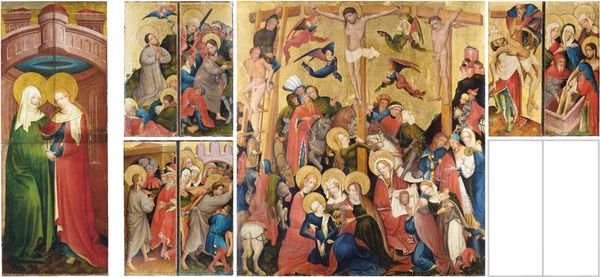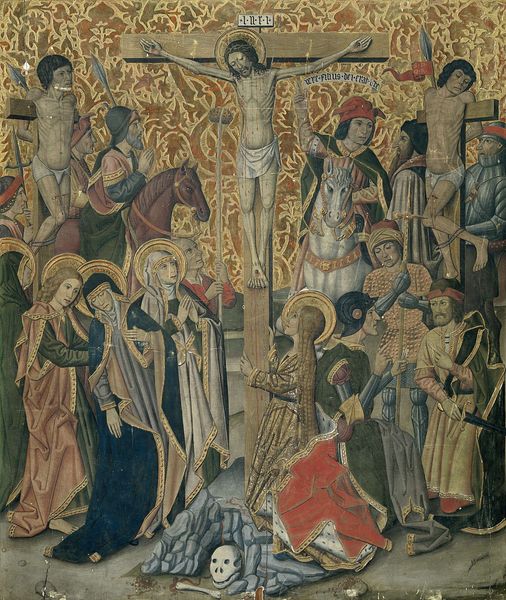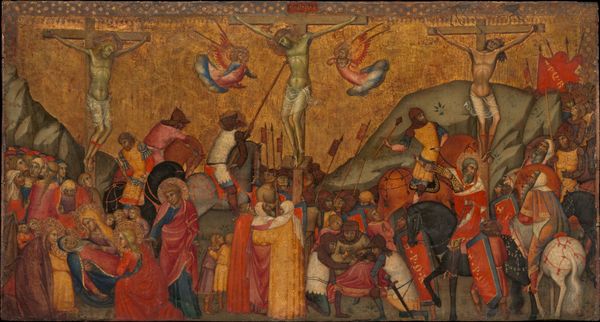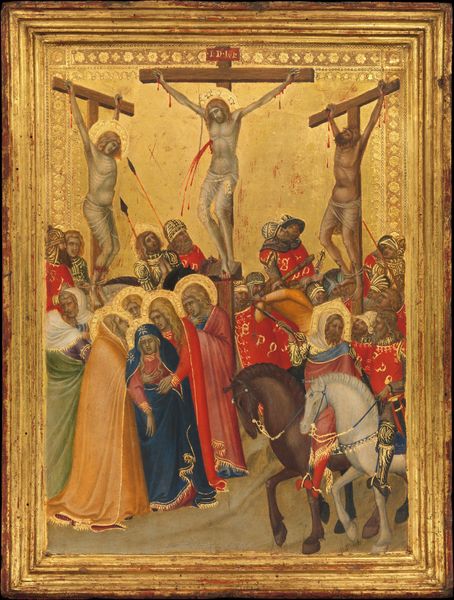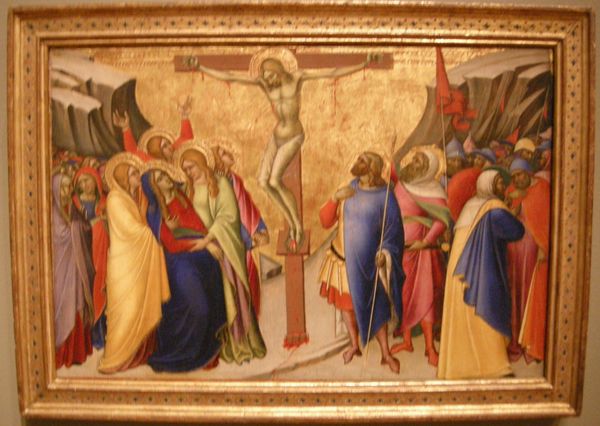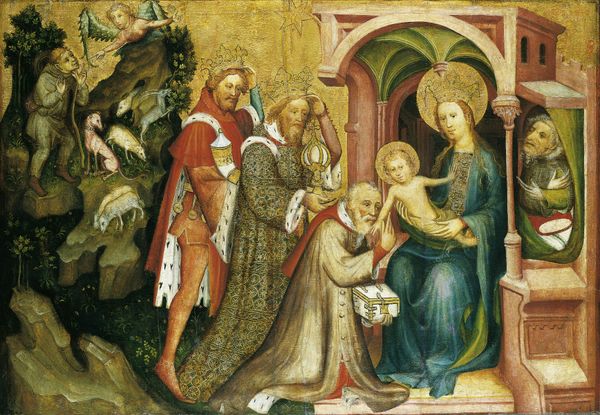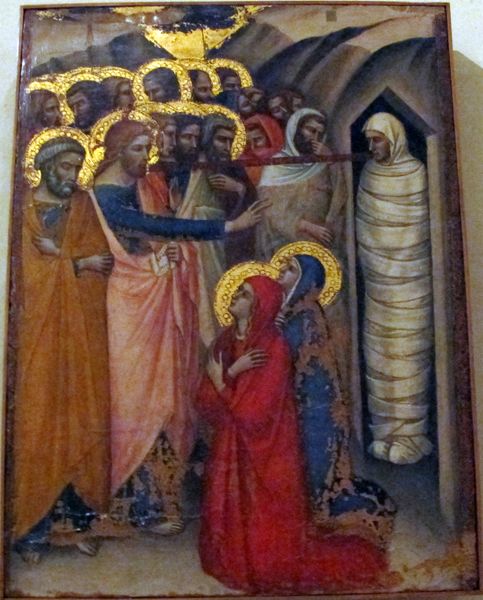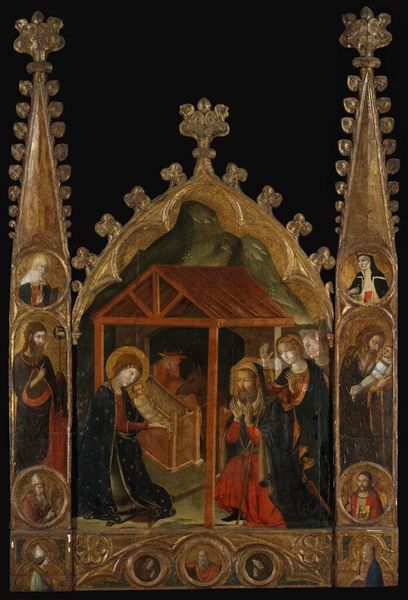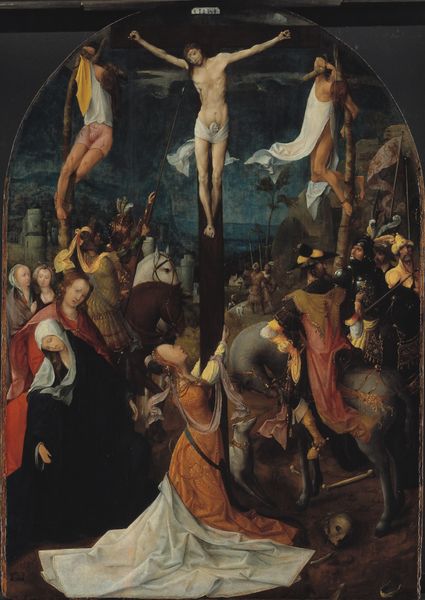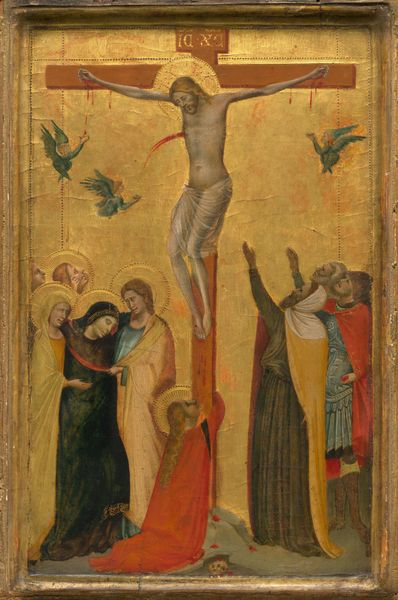
tempera, painting
#
portrait
#
medieval
#
tempera
#
painting
#
figuration
#
oil painting
#
jesus-christ
#
child
#
12_15th-century
#
crucifixion
#
history-painting
#
international-gothic
Dimensions: 186.4 x 168.6 x 1.4 cm
Copyright: Public Domain
Curator: This medieval panel painting is called "The Crucifixion," dating to around 1420, and you can find it here in the Städel Museum's collection. It was created in tempera. Editor: It strikes me immediately as both reverent and strangely busy. The gold background is very still and iconic, but the figures below feel crammed together and agitated. Curator: It certainly reflects the International Gothic style of the time. The flattened perspective and elegant line work prioritize symbolism over realism. We can see that gold background as a representation of divine space, emphasizing the spiritual gravity of the event. Editor: But within that space, the figures! It feels like a bustling market scene almost. What's fascinating is the display of emotion within what seems to be, visually, an unfolding tragedy of immense proportions. You’ve got angels wailing, mourners in despair...yet so much vibrant color and pattern. Curator: Absolutely, the colors would have held symbolic meaning for contemporary viewers. Red could signify passion, both Christ's sacrifice and the grief of the Virgin Mary. Blue often represents hope or heavenly grace. These weren't simply aesthetic choices. They spoke to a shared visual vocabulary. Note also how Christ is above this flurry of color, almost unearthly as he levitates, contrasting with all the grounded figures below. Editor: And look at the ways wealth and class are denoted, even within this spiritual setting – the detailed fabrics, the horses… the ways those in authority sit astride animals, overlooking the lamenting crowds, driving the story's themes home for the audience in that time. Curator: The composition directs our attention. See how all the lines, the gazes of the figures, converge upon Christ on the cross? It reinforces the idea that all of human history and destiny hinge upon this single moment. It reinforces cultural norms, religious ideas, the whole cultural understanding of history, which may look strange today, but held such gravity then. Editor: Yes, considering this work now allows us to consider not only how one viewed faith at that time, but the position of all different levels of society in relationship to a belief system. A rich work for historical interpretation, despite, or perhaps because of, its devotional intention. Curator: Agreed. And those choices still resonate today; art history can help us explore enduring psychological symbols in human storytelling.
Comments
stadelmuseum about 2 years ago
⋮
The main panel of the winged altarpiece features the Crucifixion. At the centre of the crowded scene is the crucifix, clasped by Mary Magdalene, before it a group with the unconscious Virgin and St Veronica. The latter presents the sudarium to the onlookers kneeling in the right foreground. Their pious devotion supplies the retable viewer with “instructions for use”. Split into two in the nineteenth century, the wings are not extant in their entirety. The inner sides show further scenes from the Passion; of the paintings on the outer sides, only the Visitation has survived.
Join the conversation
Join millions of artists and users on Artera today and experience the ultimate creative platform.
